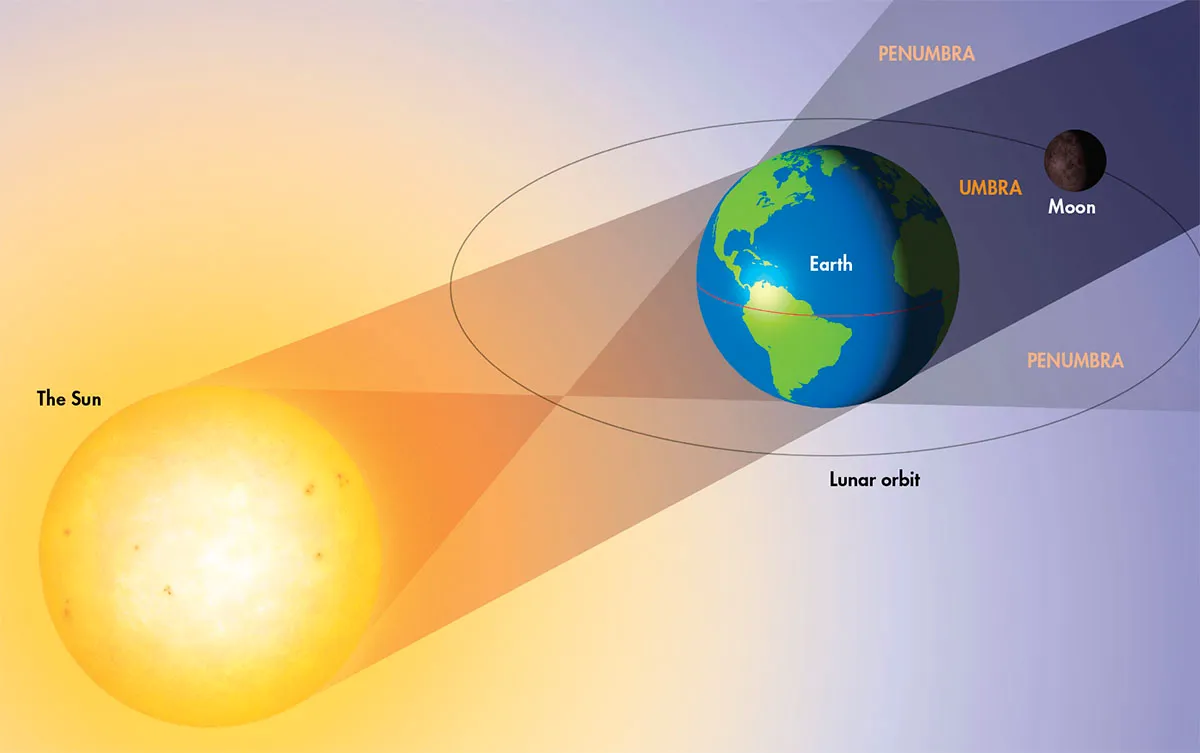There’s a partial lunar eclipse taking place this week in the early hours of 18 September, when a portion of the Moon’s surface will be covered by Earth’s shadow.
The full Moon that will be partially eclipsed on 18 September will be the Harvest Moon for 2024.
This is because it occurs nearest to the Northern Hemisphere’s autumn equinox (the equinox itself occurs on 22 September).
The best time to see the lunar eclipse will be 18 September, 01:41–05:47 BST (00:41–04:47 UT).
Find out when the next eclipse is taking place and how to photograph a partial eclipse
Why lunar eclipses happen
Unlike its solar counterpart, a lunar eclipse can be seen from anywhere on Earth where the Moon is above the horizon.
Fortunately, this will be the case from the UK for this particular eclipse.
Earth’s shadow in space has two components: a weak, outer penumbral shadow and a dark, inner umbral shadow.
If you were in a spacecraft inside the penumbral shadow at the distance of the Moon, you’d see a partial solar eclipse.
The closer you got to the umbral shadow, the greater the proportion of the Sun would be hidden from view. Inside the umbral shadow, the whole of the Sun would be hidden.

As Earth is a little under four times larger than the Moon, its apparent size from the Moon’s position is approximately four times larger than that of the Sun; remember that from Earth, the Sun and Moon have roughly similar apparent diameters.
As a consequence, Earth’s umbral shadow at the distance of the Moon is also around four times larger than the Moon, depending on where both are in their respective orbits.
On 18 September, the umbral shadow appears roughly 1.7° across, the Moon’s apparent diameter around 0.5°. The penumbral shadow appears 2.6° across at this time.

What you'll see during the 18 September lunar eclipse
Let's go through what you can expect to see if you observe the partial lunar eclipse on 18 September.
From Earth, as the Moon initially moves into the outer portion of the penumbral shadow at 01:41 BST (00:41 UT), very little will be seen visually or indeed photographically.
It’s only when the Moon moves significantly into the penumbral shadow and closer to the umbral shadow that a greater degree of shading becomes noticeable.
For this eclipse, the darkest shading will appear at the Moon’s northeast limb.

This rather subtle shading gives way to a more tangible clip out of the Moon’s northeast edge as the Moon encounters the umbral shadow at 03:12 BST (02:12 UT).
The point of greatest eclipse occurs at 03:44 BST (02:44 UT), when the umbra is most likely to appear black.
However, over-exposed images of this shadow may reveal some of its colour.
The Moon leaves the umbral shadow at 04:16 BST (03:16 UT) and the penumbra at 05:47 BST (04:47 UT), bringing the event to a close.
If you observe or image the 18 September partial lunar eclipse, let us know! Email contactus@skyatnightmagazine.com.
